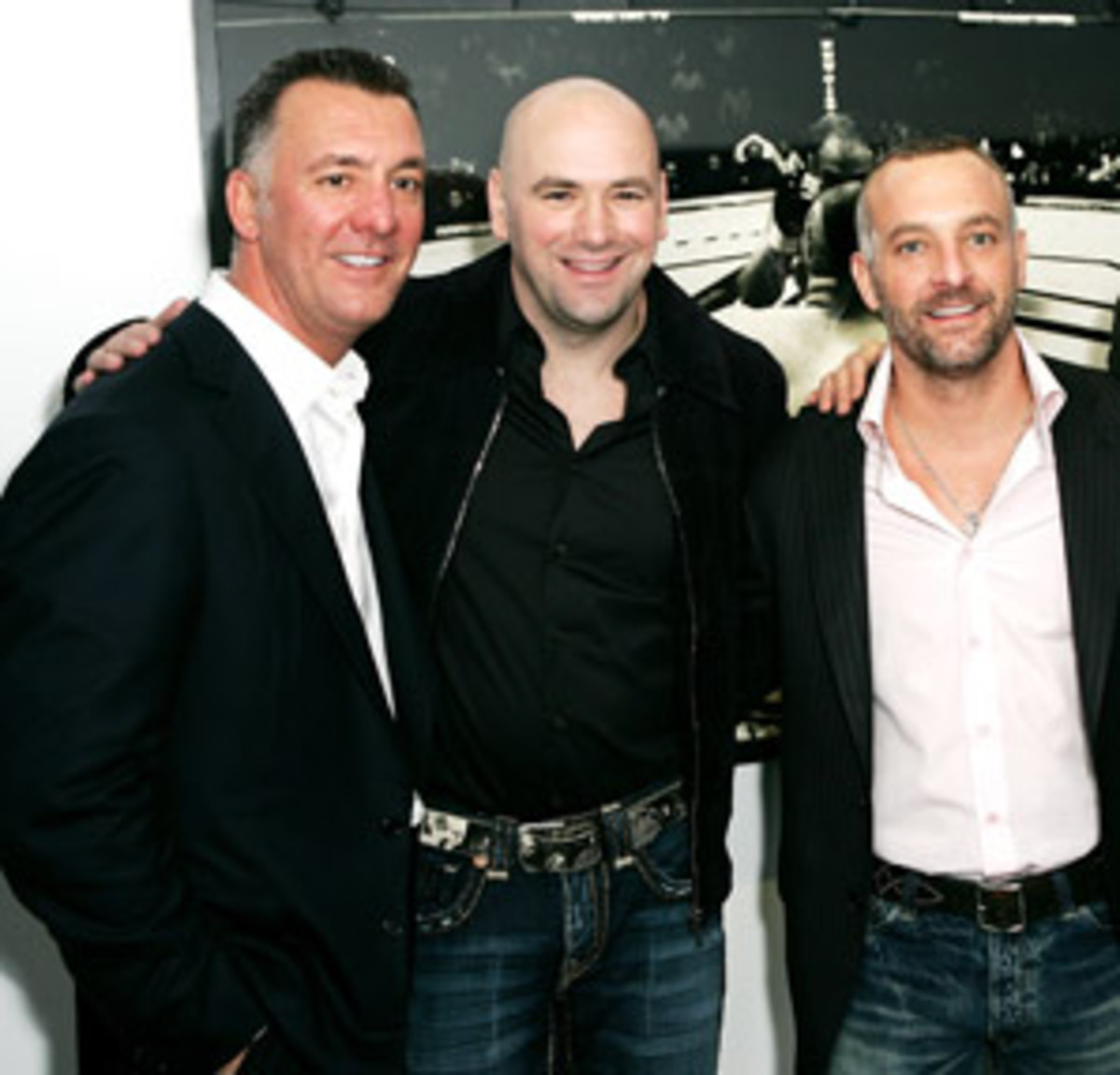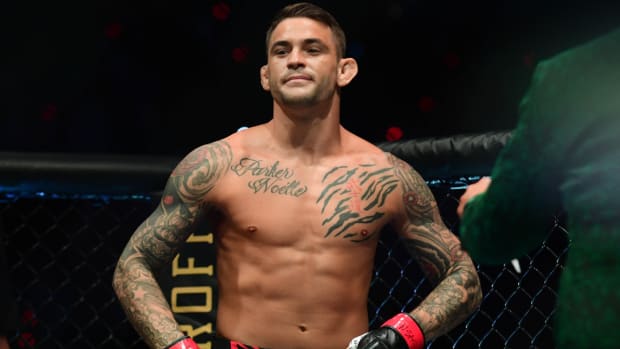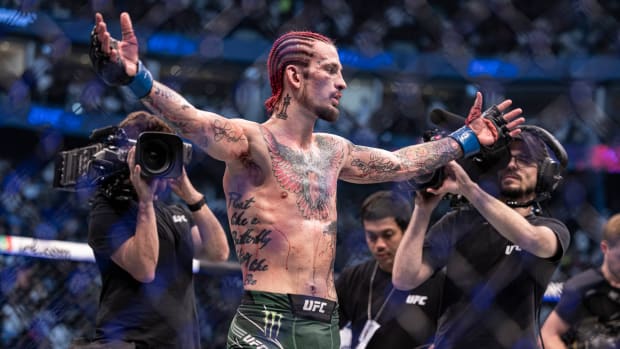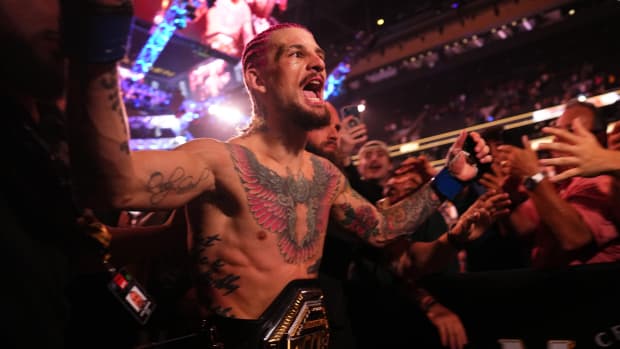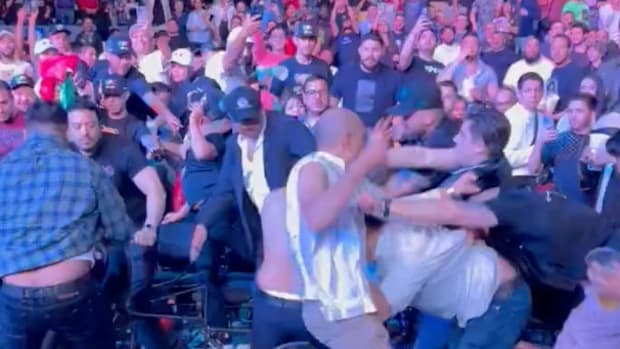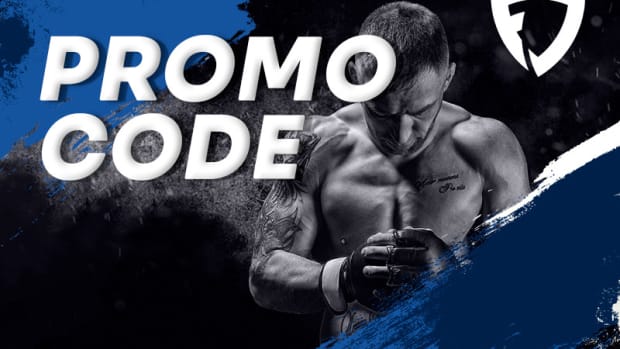Proof of mixed martial arts' rapid growth lies within the tube
When casino magnate brothers Lorenzo Fertitta and Frank Fertitta III joined Dana White in pooling together $2 million dollars to purchase the UFC in 2001, MMA -- dubbed "No Holds Barred" then -- couldn't so much as get a bite from the pay-per-view industry.
Two weeks after 9-11, in MMA's Nevada debut, the UFC reappeared on PPV. Dotted with decisions, UFC 33 was regarded a near disaster for going off the air prior to the conclusion of the main event. The night, however, marked an important moment in the revitalization of MMA. At a minimum, it gave rise to a stronger gust the following summer when Fox Sports Net and the UFC partnered for the first fight aired on U.S. cable television. NHB was now MMA, and executives of all kind were paying attention.
Fast forward seven years and CBS, in a feat still unbelievable to many, is set to air a live fight card on prime time Saturday. It will be the network's third MMA showing in less than six months.
Asked what was needed to remove the "underground" label so closely associated with MMA, most observers offered a not-so-simple suggestion: Get MMA on TV and people will watch.
Executives at Spike TV took the first gamble, agreeing to air a reality show featuring mixed martial artists competing for a UFC contract -- but not before the fight company footed the $10 million price tag. Soon, the sport's core audience was discovered to be a marketer's dream, and the UFC wasn't about to pay anyone to broadcast its product again.
For the benefit of advertisers and TV execs, who was watching became almost more important than how many. Although a 1.9 rating for The Ultimate Fighter Season 1 finale was nice nonetheless. Faith in MMA fans -- more than half of whom are males 18 to 49 -- came early in 2005 for Spike executives like BrianDiamond, the network's current senior vice president of sports and specials.
"I'm not surprised everybody is trying to get into the mix [today]," Diamond said of the bevy of networks vying for the coveted audience. "It speaks to the power, strength and fan base of MMA. It was a sport looked upon disgracefully when it came in 15 years ago because of the way it was positioned. And now it's the hottest growing sport worldwide."
Attempting to find the magic shared by UFC and Spike has proved fruitless for most. While competing promoters and networks disappeared, consolidated or downsized, the deal between Spike and UFC, recently extended through 2011, ensured continued growth in each group's brand equity. So intertwined are Spike and its flagship sports property, some have labeled the network the rather uninspired "UFC Channel." Diamond doesn't agree, saying that while the "network was the home of the UFC," it also carries other important properties.
Mark Cuban's HDNet would love to be known as the home of MMA. But HDNet's efforts have taken a different direction than Spike, Showtime or CBS in trying to make itself unique.
"We're interested in bringing the best fights for fight fans, regardless of where it's being held and who the promoter is," said HDNet Fights CEO Andrew Simon. "That's the piece that makes us a little bit different."
Offering up to 30 live MMA events this year, HDNet ventured across and outside the U.S. to find broadcast-worthy fights in 2008. With homes increasingly adopting hi-def and additional cable carriers offering HDNet, Cuban expressed pleasure in "the way things are going," even though his goal of surpassing Showtime's subscriber base, which stands at 16 million, seems unlikely this year.
From the promoter's point of view, as Strikeforce Vice President Mike Afromowitz attests, exposure and cost-cutting are two major benefits of having a broadcast partner. The California-based fight company currently has three television deals to fit its needs -- The Score in Canada, HDNet and NBC, which averages 700,000 viewers for its repurposed fights several hours after Saturday Night Live.
"Getting a deal is by no means easy," Afromowitz added. "There's a lot of competition out there on the networks, and the product has to be superior in order to get a TV deal."
Affliction Vice President Tom Atencio, who also signed a deal with HDNet, acknowledged that even in a climate when most networks are sincere in their interests as the sport approaches mainstream acceptance among advertisers and a widening fan base, "it's still difficult" to nail down a quality TV deal..
As a group, however, TV executives in the MMA business appear to be a happy bunch. Returning to prime time from the BankAtlantic Center in Sunrise, Fla., the Oct. 4 EliteXC-CBS card, said Senior Executive Vice President of CBS Prime Time, Kelly Kahl, should deliver similar numbers to the 6.5 million viewers who tuned in last May to watch MMA's debut on CBS.
"I think we gave it some mainstream legitimacy," Kahl said of the first CBS card when Kevin "Kimbo Slice" Ferguson, who headlines Saturday against KenShamrock, won in controversial fashion. "I certainly like to think we helped bring a lot of new fans on board. For CBS, this isn't a one-shot deal. This is more of a journey. We need to continue to develop fighters and develop the sport. That's the longer term plan for us."
Short term, Kahl will do what most in his position do after an event: check ratings.
